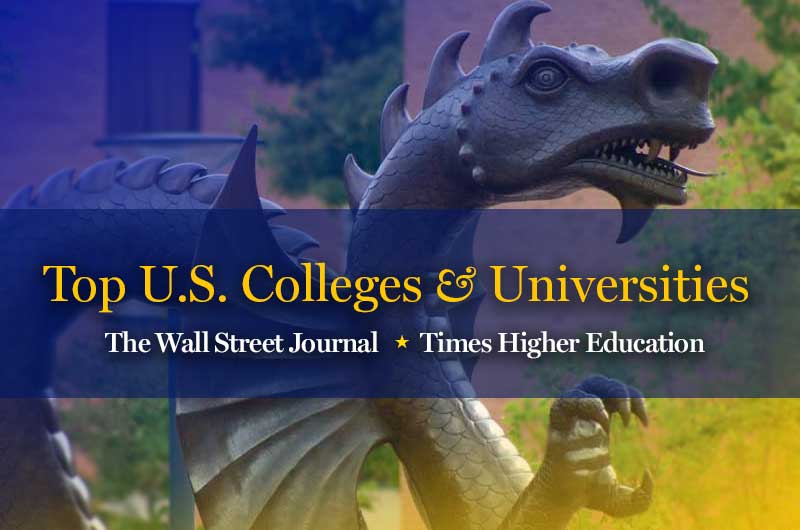Drexel Jumps Ahead in Wall Street Journal/Times Higher Education Rankings

In this year’s Wall Street Journal and Times Higher Education College Rankings, Drexel University placed 74th out of 968 other colleges and universities across the country, landing in the top 8 percent of America’s institutions of higher education. When compared solely to private universities, Drexel ranks 36th.
The jump continues Drexel’s trend of making significant gains in the rankings. As previously reported by DrexelNow, last year the University moved 9 spots ahead of its original placement in this three-year-old ranking to place 84th out of 1,054 American colleges and universities.
“Drexel’s continued strong showing is a result of the many improvements we have made recently in the quality of our teaching and experiential learning, as well as in attracting and retaining outstanding students,” University President John Fry said. “The Wall Street Journal/Times Higher Education’s student-focused ranking demonstrates the critical value of the Drexel Co-op program, which provides students the real-world work experience that employers value.”
The methodology used in The Wall Street Journal and Times Higher Education’s system values the outcomes of student success, especially after graduation. This differs from other rankings, such as the U.S. News & World Report’s annual “Best Colleges” list, that place more emphasis on inputs, like college placement test scores and acceptance rates.
The Wall Street Journal and Times Higher Education ranked the schools in four main categories: resources, engagement, outcomes and environment. Scores were tallied by surveying almost 200,000 college students across the country, as well as other sources like the U.S. Department of Education’s Federal Student Aid, the College Scorecard, the Bureau of Economic Analysis and Times Higher Education’s Academic Reputation Survey to determine a university’s reputation for excellence in teaching.
The “outcomes” category held the most weight. It accounted for 40 percent of the overall grade and was based on graduation rate, graduate salary, reputation and debt repayment. The “resources” section made up 30 percent of the grade and judged the instructional expenditure per student, the number of faculty per student and papers published per faculty. Drexel scored the highest in the “engagement” category, which represented 20 percent of the overall ranking and looked at student engagement and interaction, student recommendations and subject breadth. Lastly, the “environment” category made up the last 10 percent of the ranking and accounted for the number of international students, student and faculty diversity and student inclusion.
Drexel received a 26.6 out of 40 in outcomes, 20.9 out of 30 for resources, 17.3 out of 20 for engagement and 7 out of 10 for the environment. Overall, the University scored 71.8 out of 100.
A survey conducted as part of the rankings asked students to answer questions on a scale of zero to 10, with 10 being the strongest agreement. Respondents gave the University 8.4 out of 10 for “right choice,” meaning that if they could start over, they would still choose Drexel. The University received 8 out of 10 for students who said it provided an inspirational and motivating environment.
Overall, the University’s placement in the Wall Street Journal and Times Higher Education ranking has improved by almost 20 positions since the rankings began three years ago. This demonstrates that Drexel has been continually recognized on a national scale as a private research university that successfully prepares students for post-graduate success.
In This Article
Drexel News is produced by
University Marketing and Communications.

